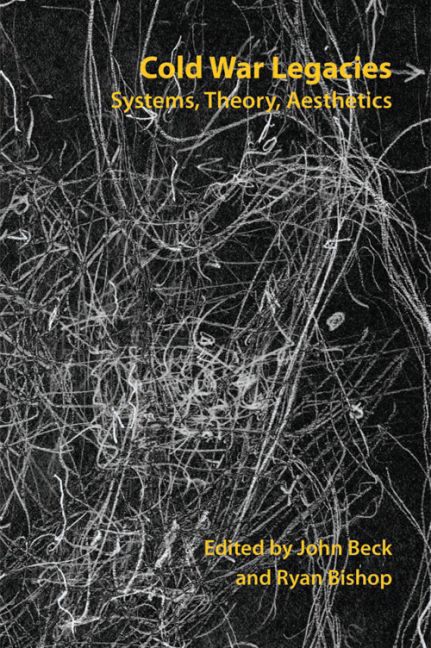Book contents
- Frontmatter
- Contents
- List of Figures
- Series Editors’ Preface
- Acknowledgements
- Notes on Contributors
- Introduction: The Long Cold War
- I PATTERN RECOGNITION
- II THE PERSISTENCE OF THE NUCLEAR
- III UBIQUITOUS SURVEILLANCE
- 8 ‘The Very Form of Perverse Artifi cial Societies’: The Unstable Emergence of the Network Family from its Cold War Nuclear Bunker
- 9 The Signal-Haunted Cold War: Persistence of the SIGINT Ontology
- 10 ‘Bulk Surveillance’, or The Elegant Technicities of Metadata
- IV PERVASIVE MEDIATIONS
- Index
10 - ‘Bulk Surveillance’, or The Elegant Technicities of Metadata
from III - UBIQUITOUS SURVEILLANCE
Published online by Cambridge University Press: 10 May 2017
- Frontmatter
- Contents
- List of Figures
- Series Editors’ Preface
- Acknowledgements
- Notes on Contributors
- Introduction: The Long Cold War
- I PATTERN RECOGNITION
- II THE PERSISTENCE OF THE NUCLEAR
- III UBIQUITOUS SURVEILLANCE
- 8 ‘The Very Form of Perverse Artifi cial Societies’: The Unstable Emergence of the Network Family from its Cold War Nuclear Bunker
- 9 The Signal-Haunted Cold War: Persistence of the SIGINT Ontology
- 10 ‘Bulk Surveillance’, or The Elegant Technicities of Metadata
- IV PERVASIVE MEDIATIONS
- Index
Summary
Intelligence collection programs naturally generate ever-increasing demands for new data.
Church Committee Report (1976: 4)When the Snowden revelations broke, one image that may have come to mind was that of a new digital Stasi. The former East German Ministry for State Security was, infamously, the per capita largest secret police force in the world. The open secret of the Stasi was its pervasive surveillance system, focused internally as a means of state control, what German scholars frame as the practice of Herrschaftor state power. One could read, for example, a Stasi file from 1989, targeting a freelance journalist and poet, and see its practice of state power expressed in unambiguous Cold War terms. This Operative Personenkontrolle(OPK) file is a culmination of sustained Stasi efforts to gain insight into this target as he was under suspicion ‘of intending to form a subversive group’, indeed, a ‘hostile group that would discredit party politics by means of public activities’ (OPK Files 1989). We read of a key event that triggered Stasi suspicions: on May Day 1987 he mounted a banner on his rooftop which read ‘To Learn from the Soviet Union is learning how to Win’ – a slogan favoured by the East German state but seemingly used by our target with ironic intent. We read about the objectives of the OPK, which include identifying contacts and relationships, developing a character profile, and investigating plans and intentions. We read that these objectives, through on-the-ground surveillance, will be led primarily by Inoffizieller Mitarbeiter– that is, unofficial collaborators, or IMs – and that the investigation will seek to recruit further IMs from the target's ‘social environment’. We also read that the OPK indicates the possible employment of ‘operative technical methods’ which include installing bugging devices.
Through these collaborative efforts, we are able to read a detailed personal history, including information about the target's schooling, where his final assessment noted ‘we have rarely had a young person who fulfilled their duties with such enthusiasm, conscientiousness and calm’; yet further information indicates ‘his political views began to deteriorate’ as denoted by the target's subsequent comments: ‘I root for an unrestrained freedom of press as Rosa Luxemburg had imagined it.’ We read hand-written examples of his poetry, and learn that he is ‘co-organizing so-called “house and yard parties” […] [and] alternative citizens’ initiatives’ which the Stasi deems subversive.
- Type
- Chapter
- Information
- Cold War LegaciesLegacy, Theory, Aesthetics, pp. 188 - 210Publisher: Edinburgh University PressPrint publication year: 2016

